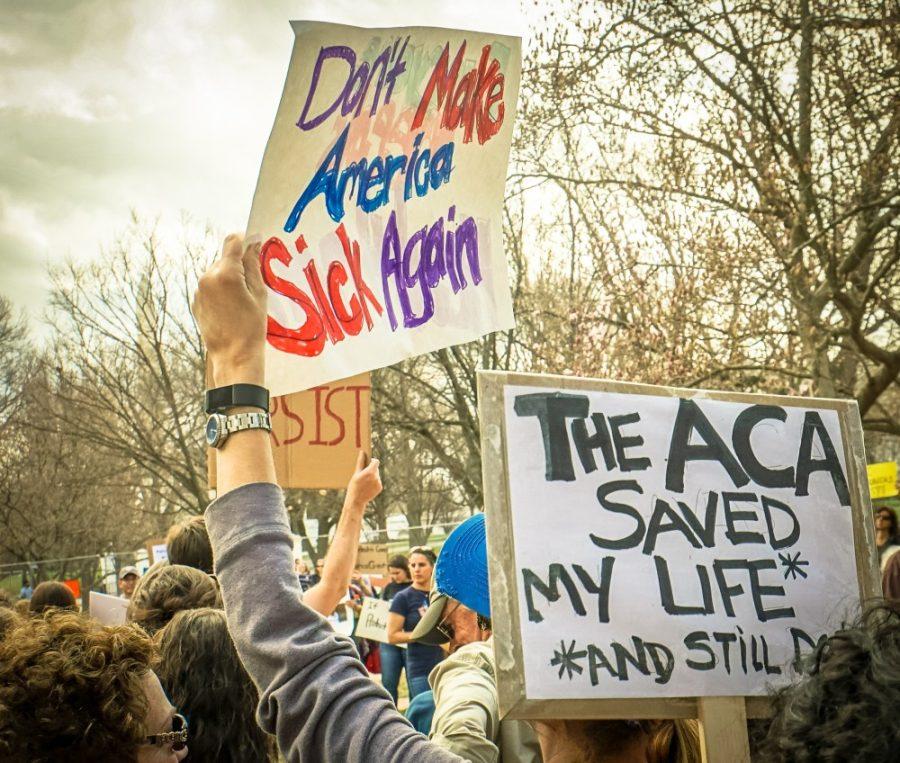The most recent battle over health coverage in America, currently playing out in the U.S. Senate, is only the latest chapter in a decades-long struggle for this country to determine the best and most affordable way to provide coverage to the most people.
The fight stretches back at least to the ‘90s, when then-first lady Hillary Clinton championed a single-payer insurance plan. The fight continues through the implementation, and now dismantling, of the Affordable Care Act — better known as Obamacare.
The plan to repeal and replace Obamacare, passed last month by the House and currently being modified pending a vote in the Senate, is already in trouble. Several GOP lawmakers have indicated they can’t support it, either because it goes too far or not far enough in repealing or replacing elements of the ACA. The vote is now delayed until after the July 4 recess as Republicans scramble to shore up support.
Arizona senators John McCain and Jeff Flake have said they will study the bill before making a decision on a vote, but both have expressed support in the past for repealing and replacing the ACA.
Arizona officials have sounded the alarm, saying the new plan will cost the state billions as it struggles to cover thousands of residents after federal funding is phased out. The alternative is letting some people go without insurance.
This would mean many elderly, poor and mentally ill would be forced to go without critical medications, doctor visits and other services that keeps them and our society safe and healthy.
Even if a version of the current Senate bill makes it to President Trump’s desk, individual states will bear the brunt of the costs as they struggle to keep their hospitals running without federal dollars. Coverage gaps are sure to exist, and some predictions have that gap ballooning by as much as 24 million individuals as many find insurance no longer affordable.
Nearly every respectable medical association has denounced the Senate bill, decrying a heartless plan that will see many more people unable to afford basic coverage.
RELATED: News Fast Five: Health Care Reform
“Medicaid coverage for up to 6.5 million women of childbearing age will be rescinded, making it harder for them to get healthy before they get pregnant,” said Stacey Stewart, president of the March of Dimes.
To be clear, the current ACA law has not delivered as promised, with many people seeing premiums skyrocket and being forced to carry coverage they may not want or need. While the current system is broken, though, the GOP/Trumpcare plan is not a viable solution.
Rick Pollack, president and CEO of the American Hospital Association, said, “The Senate proposal would likely trigger deep cuts to the Medicaid program that covers millions of Americans with chronic conditions such as cancer, along with the elderly and individuals with disabilities who need long-term services and support. Medicaid cuts of this magnitude are unsustainable and will increase costs to individuals with private insurance.”
The obvious alternative to the current debacle is a single-payer system, often called “Medicare for all,” which would provide a baseline of medical services for those most in need.
In a single-payer system, the government or a not-for-profit entity (e.g., Blue Cross/Blue Shield) would provide the coverage, rather than a marketplace with many providers, as we have now.
Regardless of age, previous health conditions or ability to pay, everyone would receive basic care and emergency services, with priority given based on need rather than socioeconomic status.
Many other countries have some form of universal care, although it gets complicated trying to figure out how each one works. However, the goal and method for each is the same: Use government funding to provide everyone — even those who can’t afford it — with basic healthcare.
RELATED: Healthcare in the age of Trump: Your medicine and you
Our federal and state governments already spend around $2 trillion annually on healthcare. Economists predict that moving to a full single-payer system would have an increased initial cost that could be paid for by small tax increases on the wealthy or a slight reduction on military spending.
Small businesses and employers would no longer need to provide costly insurance to employees, and millions currently without coverage would be able to receive preventative care — saving billions in future medical costs. Our dilapidated mental health system could be rebuilt.
Critics of single-payer systems typically suggest that it would cost more to administer than anticipated, and that younger, healthy people would be “punished” by having to pay higher taxes. However, these same pundits fail to understand that millennials would rather pay slightly higher taxes than worry about how to afford insurance, especially as our parents age and medical costs skyrocket.
Healthcare is too important to trust to a private market that is more concerned with profits than the well-being of society. The price of inaction for those in need is heavy on our wallets and our souls. How can we claim to be the greatest country if we allow suffering to save a few bucks?
America, once a beacon for the rest of the world, has a moral and ethical responsibility to care for its sick, disabled and elderly — regardless of monetary cost. The first step toward that goal is providing a basic level of universal health coverage for everyone.
Follow Andrew Paxton on Twitter.









